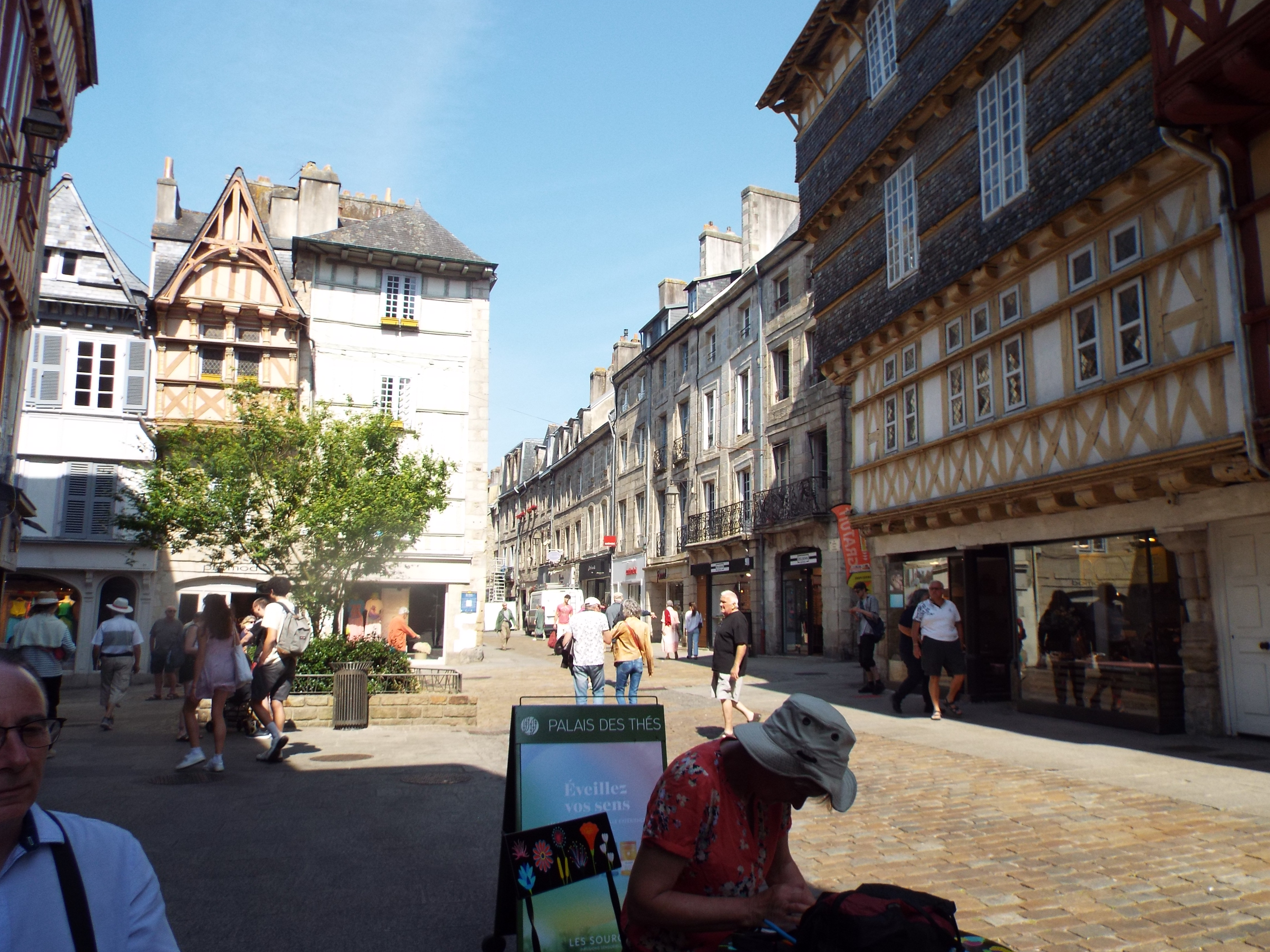
|
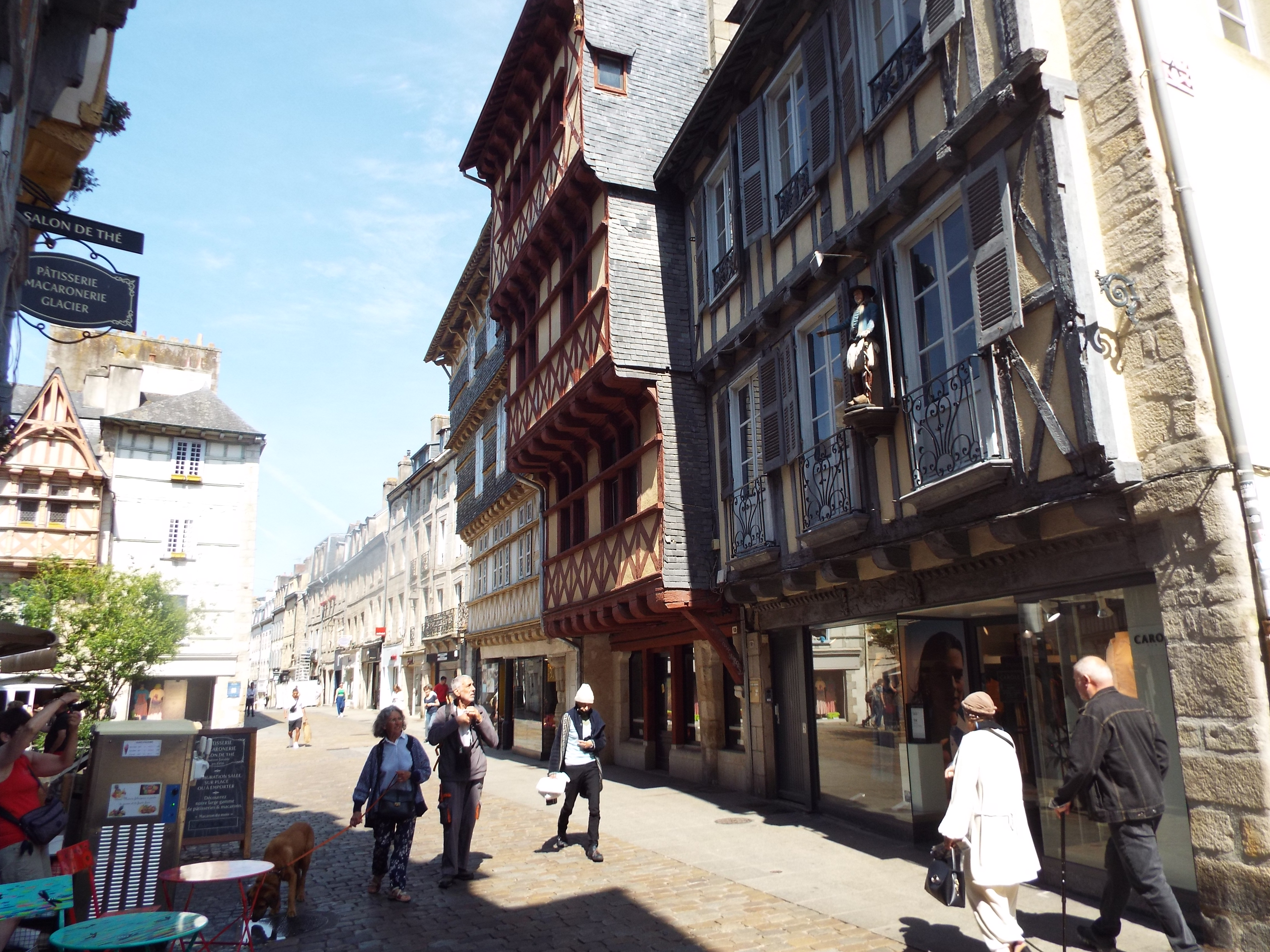
|
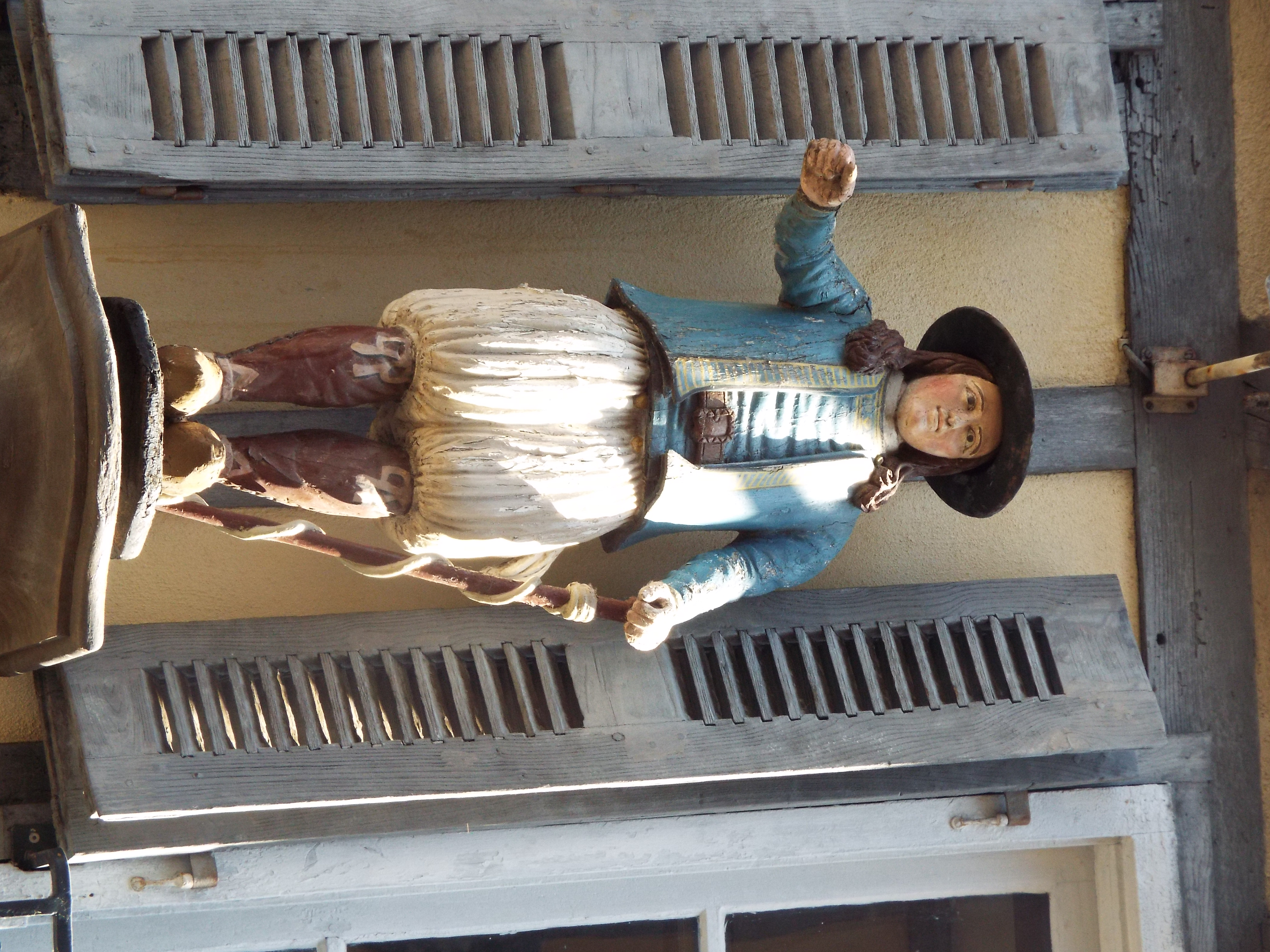
|
Today we visited Quimper, the administrative capital of the department of Finistere (lands end). Finister is a department near the
western tip of Brittany, hence its name. Its capital is a fairly large bustling city, clean and neet as is most of France. Its buildings are a mix of stone and columbage. Columbage is a construction method consisting of wood and plaster covered stone. One finds it in often in Brittany, Normandy and England. The small statues of human figures on the front of buildings above ground level are common.
N 47 59.740 W 4 6.134 |
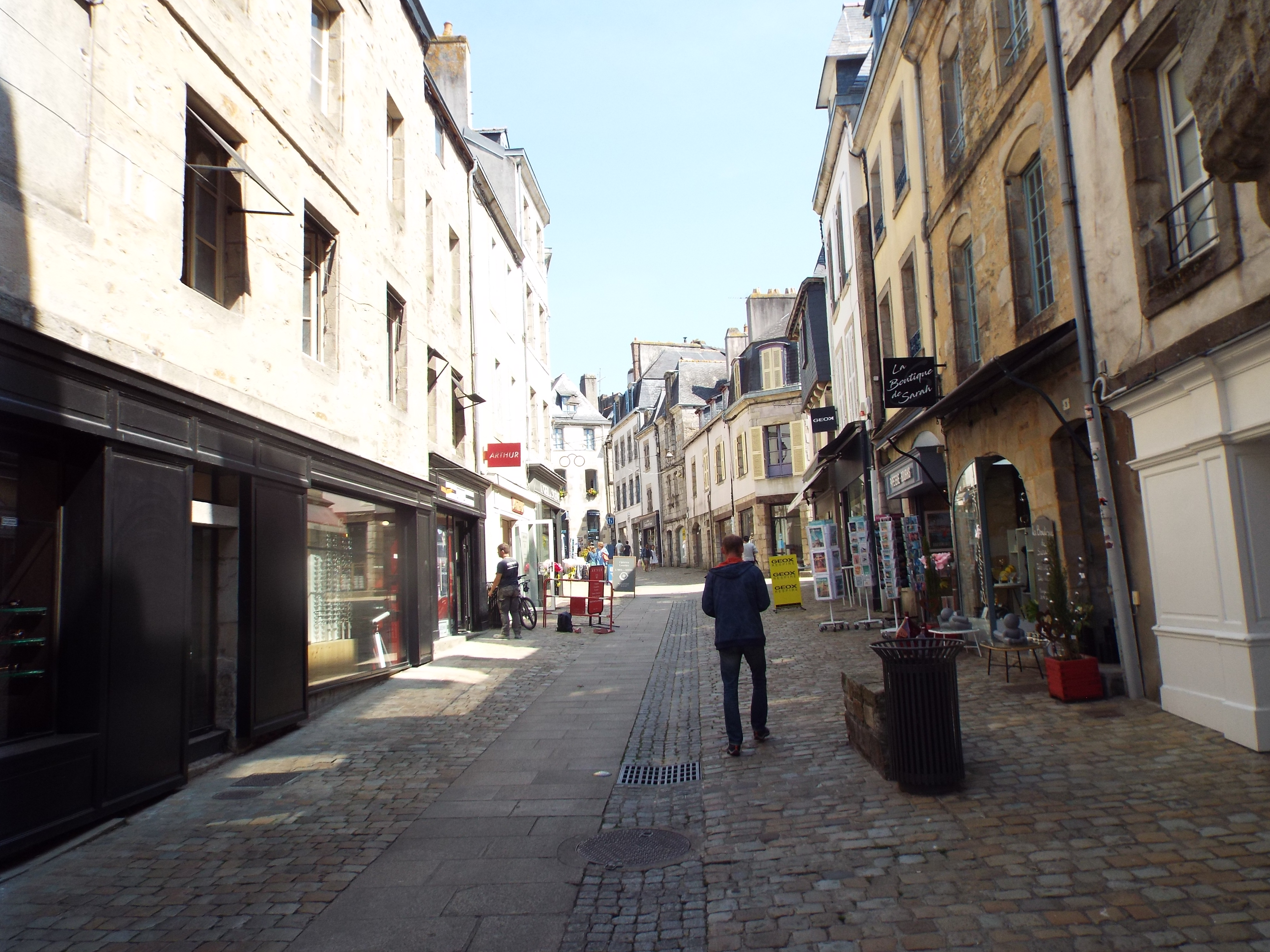
|
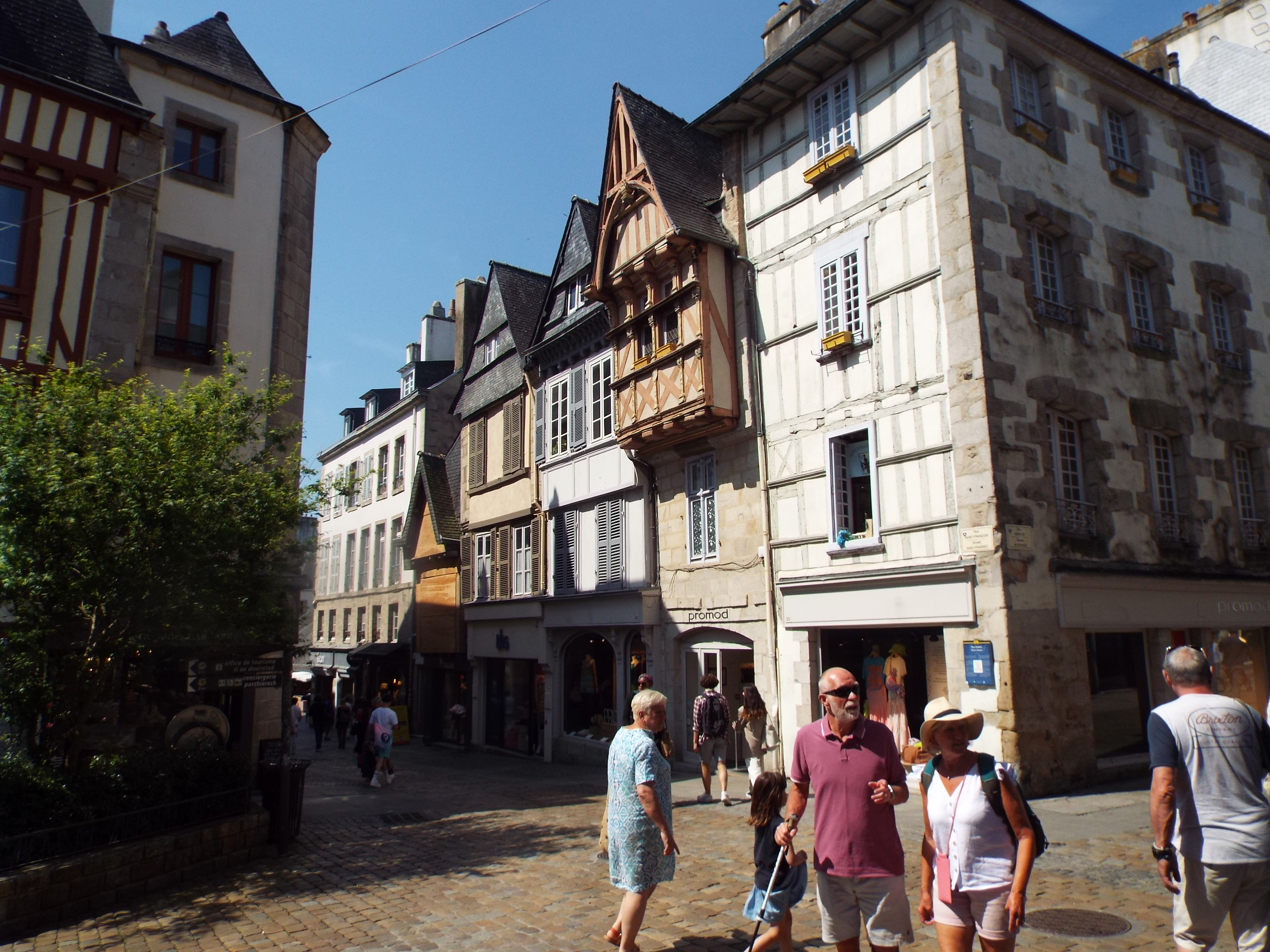
|
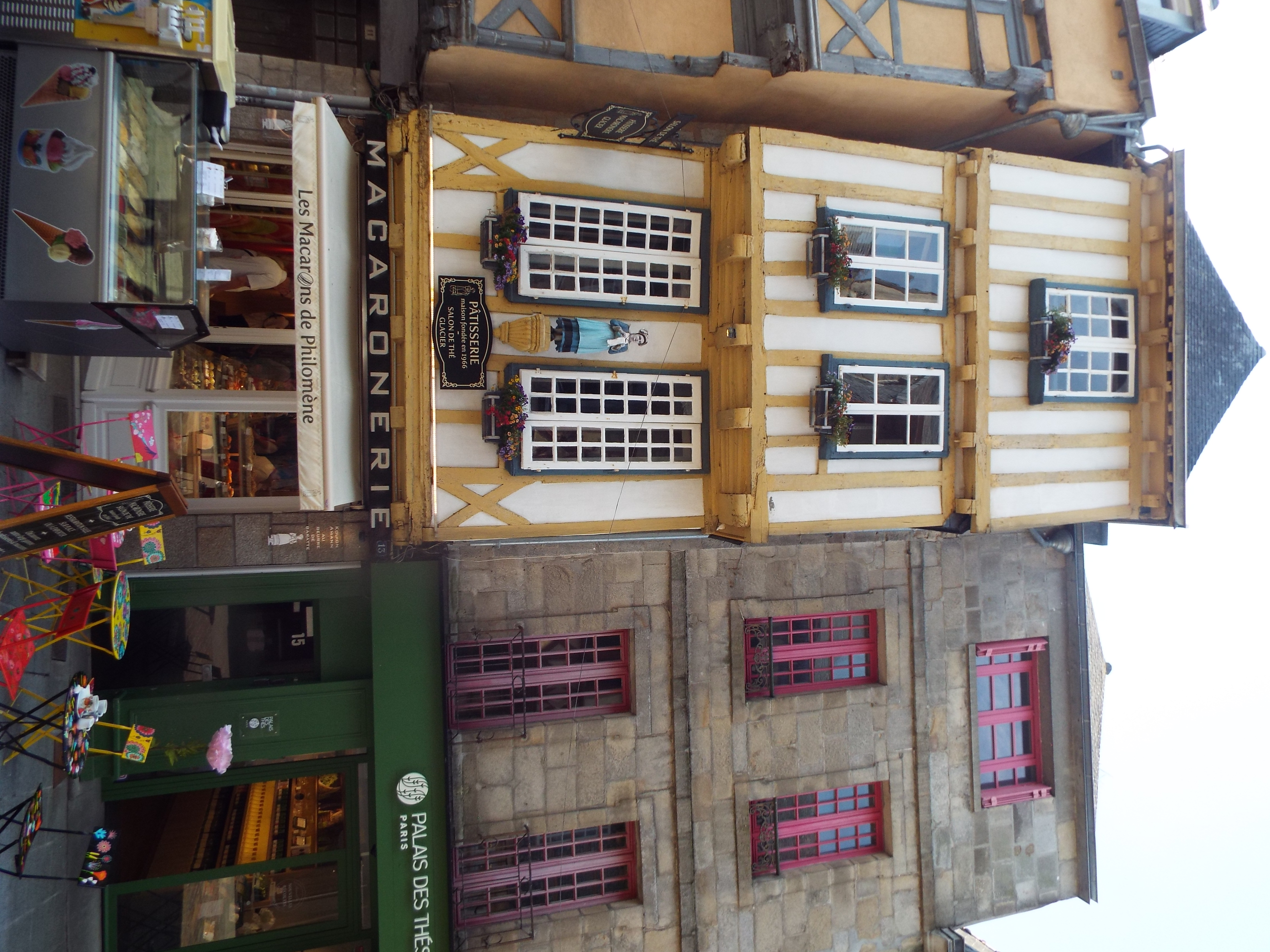
|
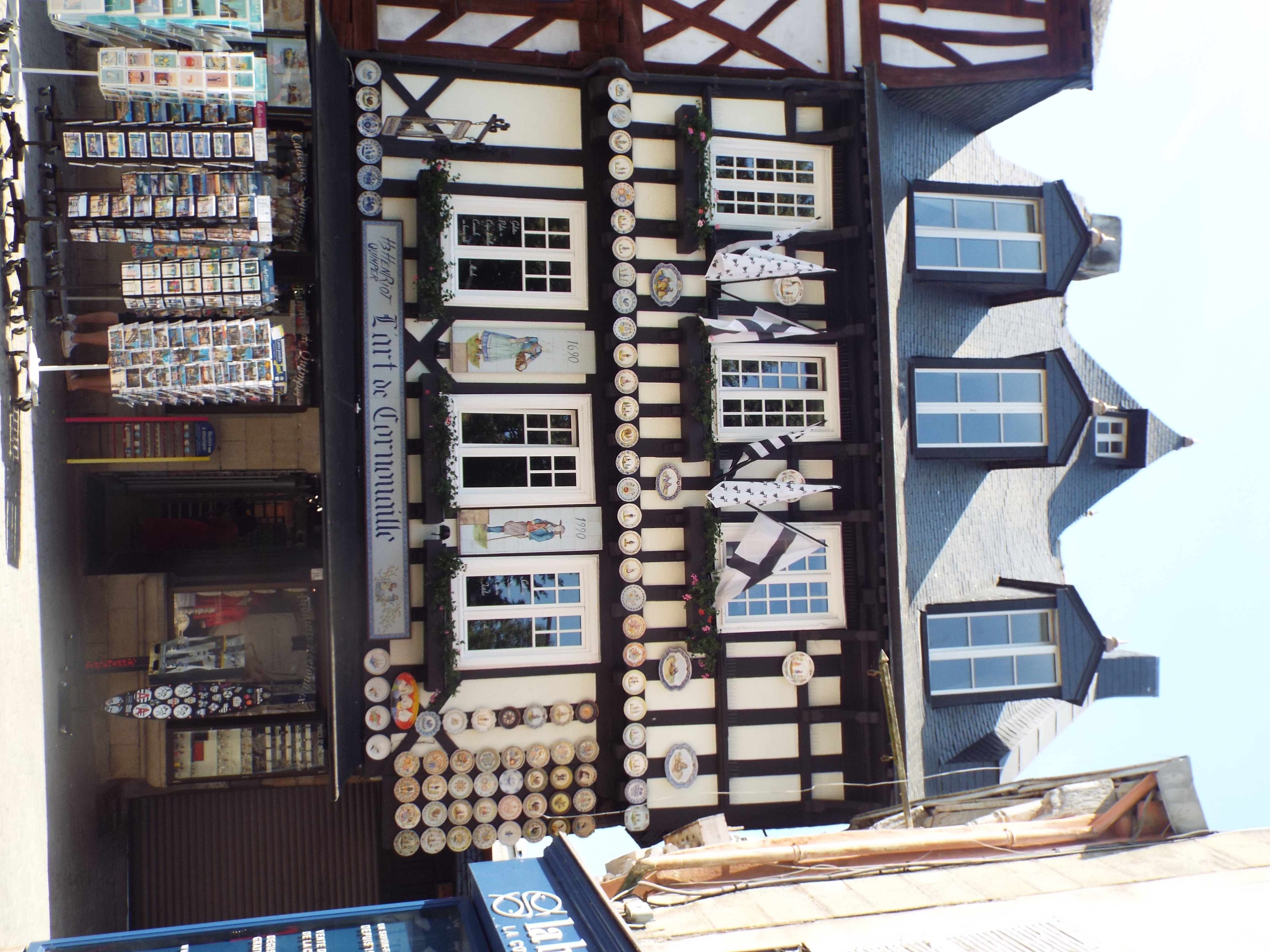
|
| There is a magnificent gothic cathedral in Quimper. It was closed that day so no interior shots. This was a little odd since cathedrals are usually open, but closed it was. Also i was not able to get a shot of the whole since it was too near many buildings. But here a few partials to give an idea of the marvelous stone work. |

|
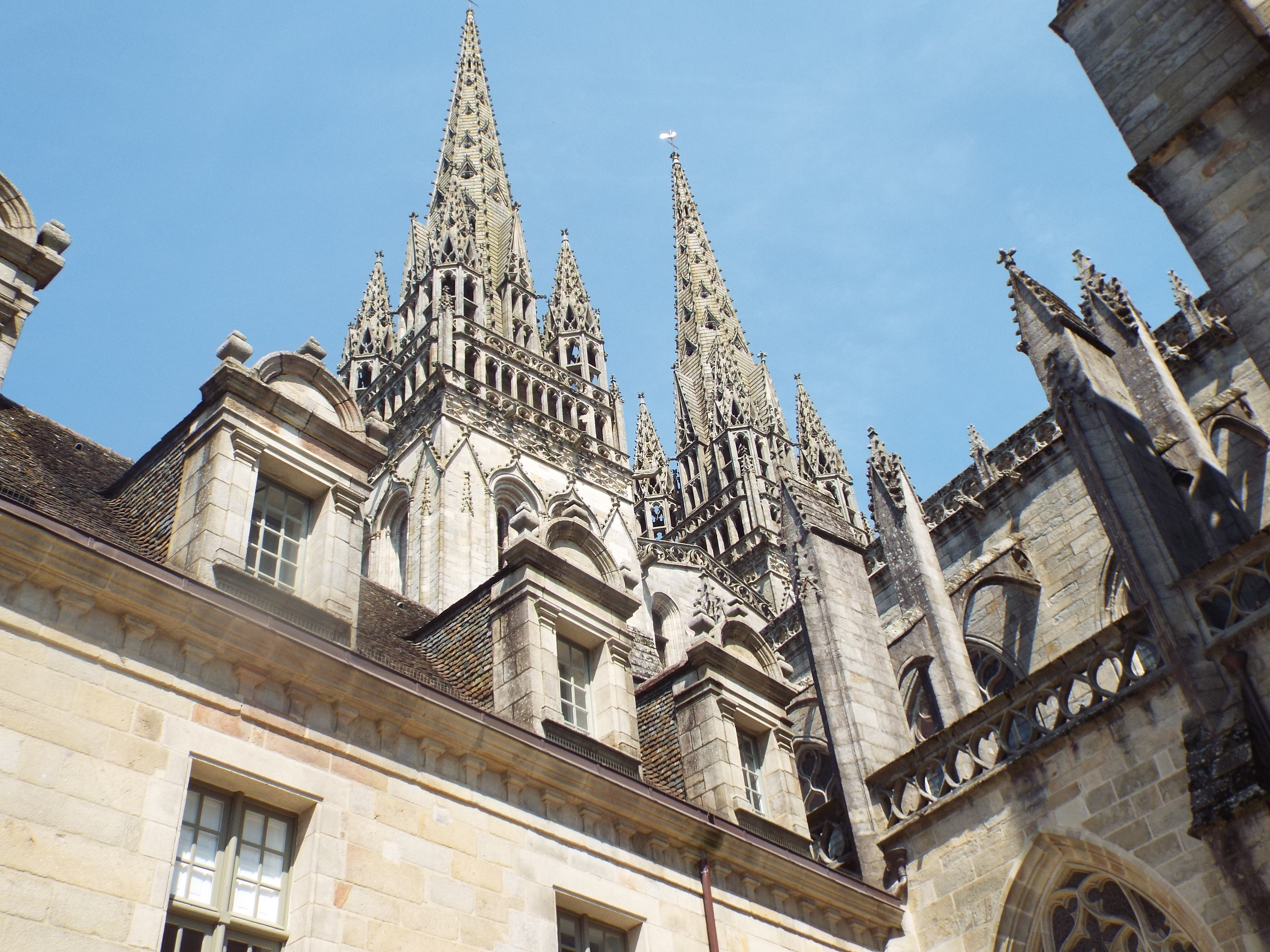
|
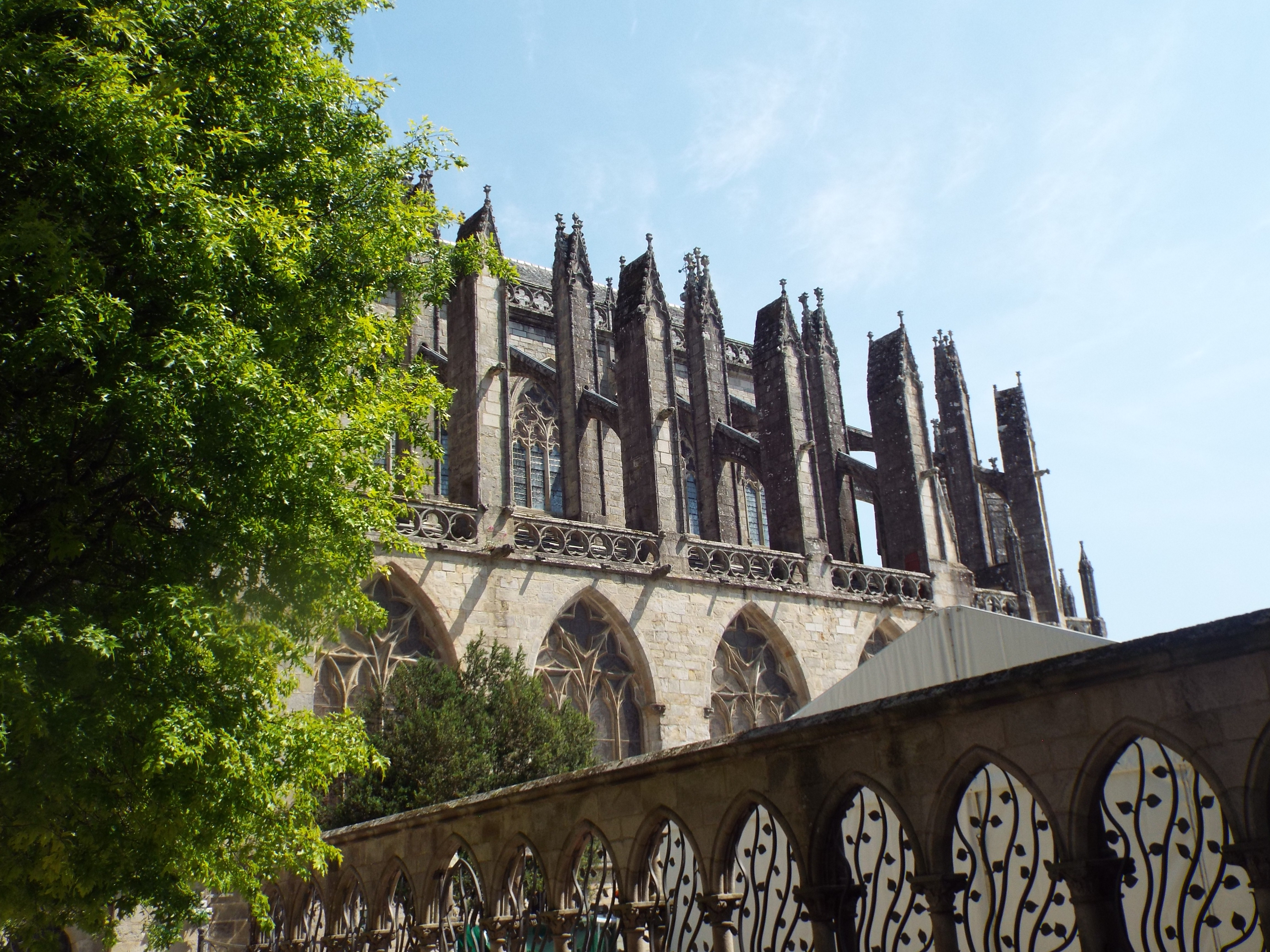
|
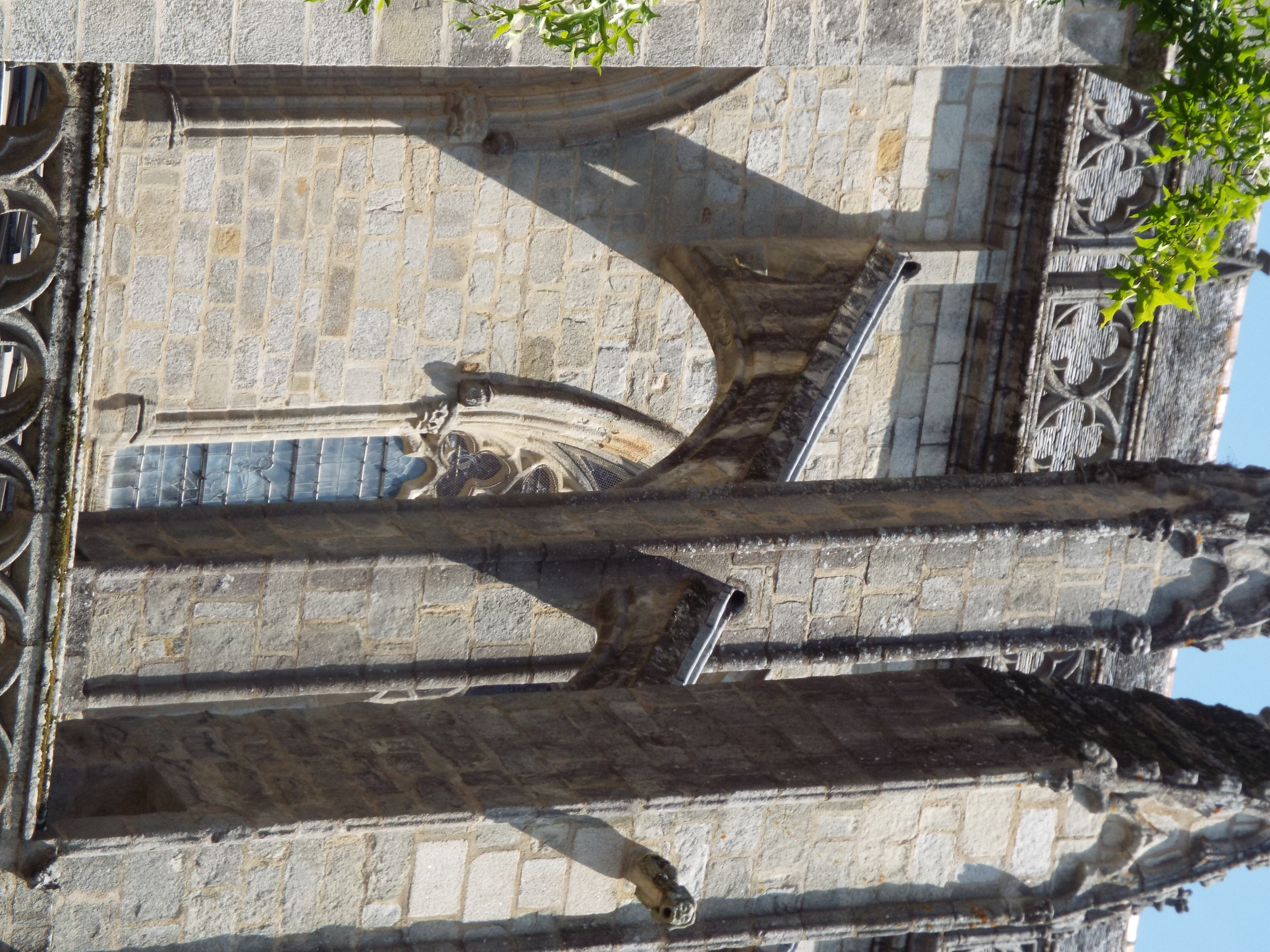
The two flying buttresses offer insight into how long it took to build this cathedral. I do not know how long it took to build this one, but gothic cathedrals often two centuries of more to build. Several generations of stone masons might devote their lives to work on the building. The National Cathedral in Washington DC took a century to build, even using modern machinery and methods. This is why they sometimes have architectual differences between the earlier and latter parts of the building. Two centuries is a long time to ponder building design. |
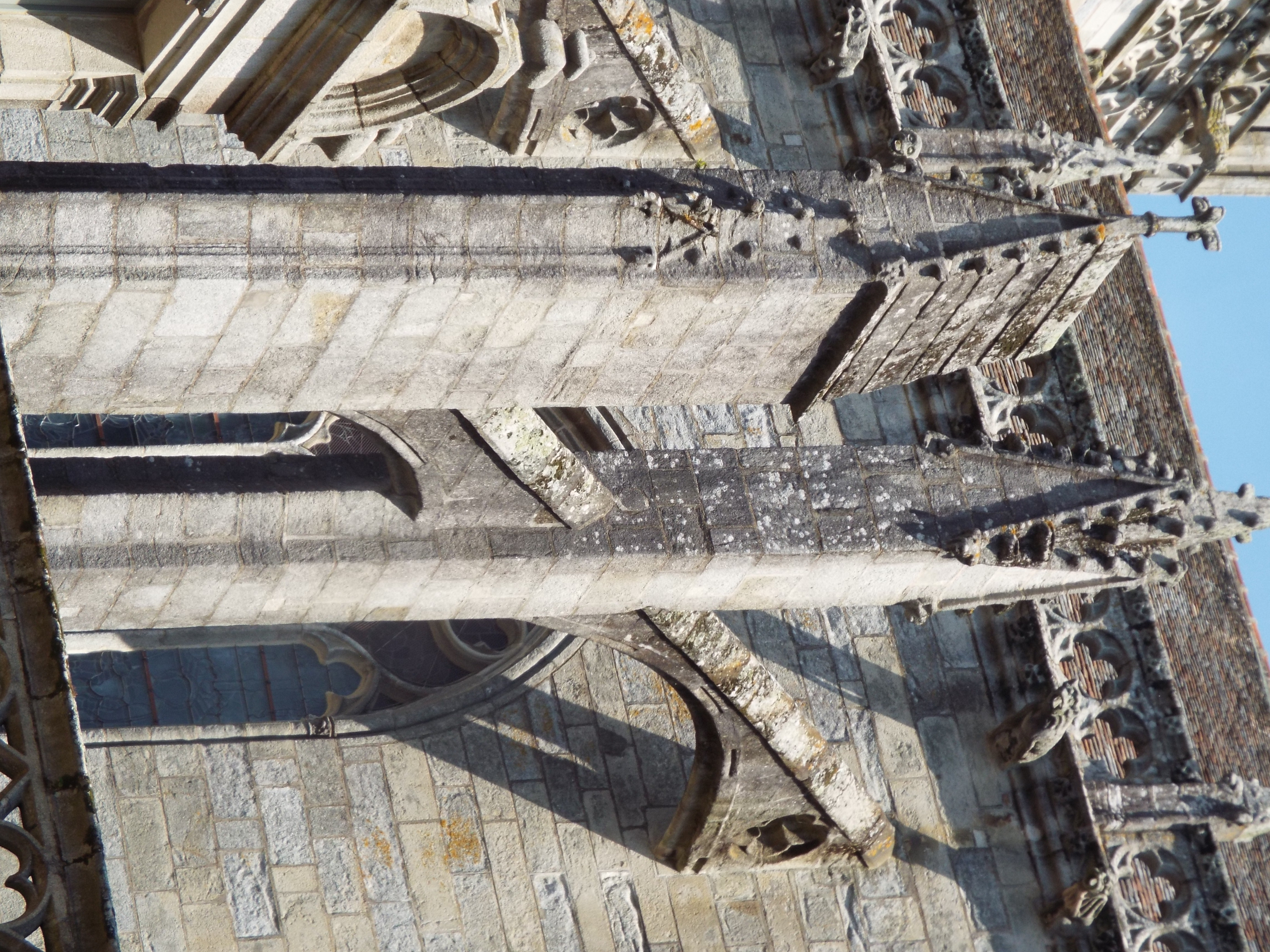
Improvements can be made over the original design, and they were made. The cathedral at Chartres is a classic example with its two dissimilar towers. In this case look at the two flying buttresses. The one above is only for mechanical support against outward forces on the wall. This was a common feature in many gothic cathedrals. With their high naves, building collapse was a concern. Flying buttresses were the solution. Now look top left. It not only provides mechanical support, but is part of the gutter and drainage system as well. |
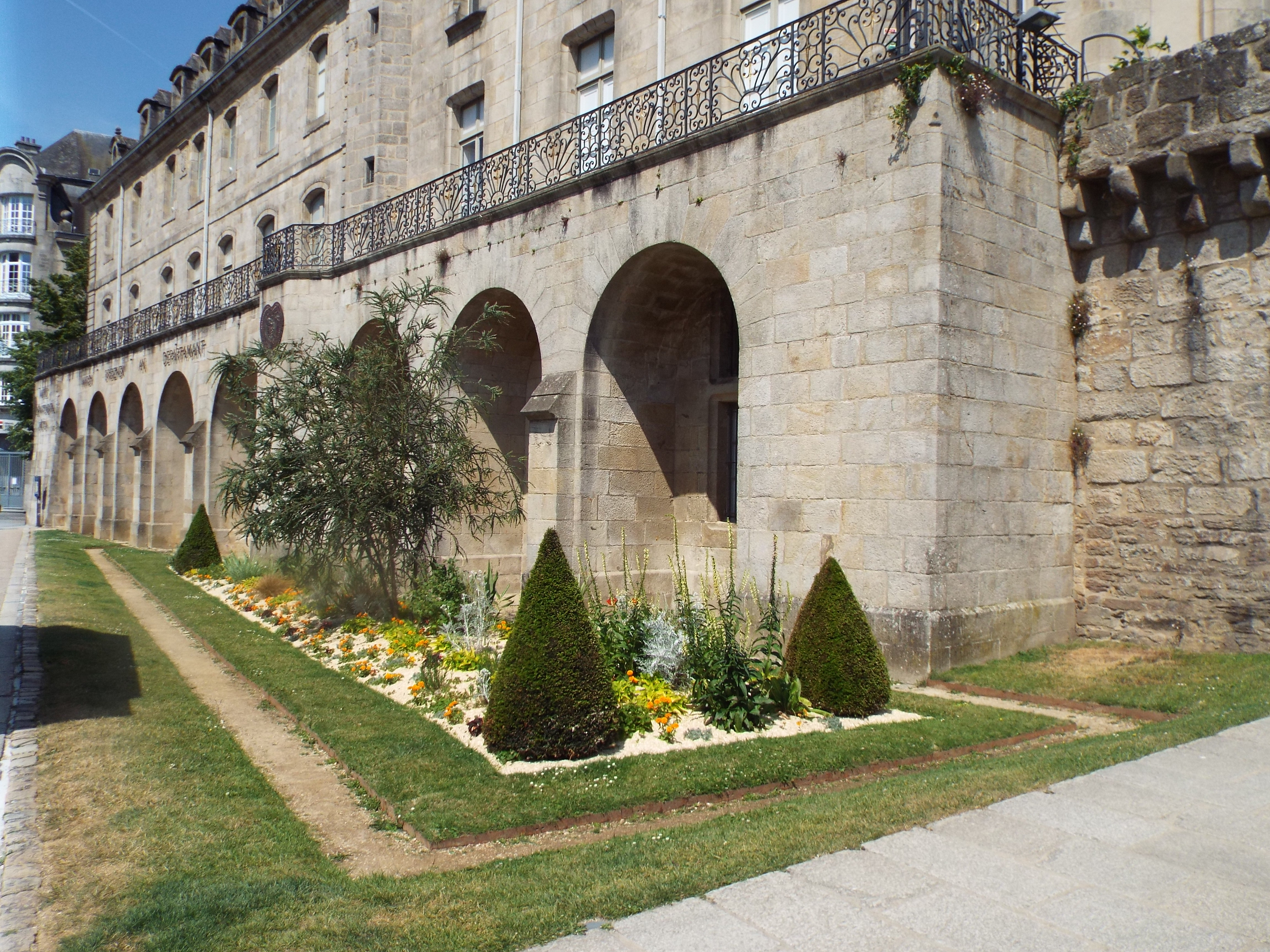
Several beautiful gardens are found just outside the cathedral. I do not know if the are church or public property but they look nice. |
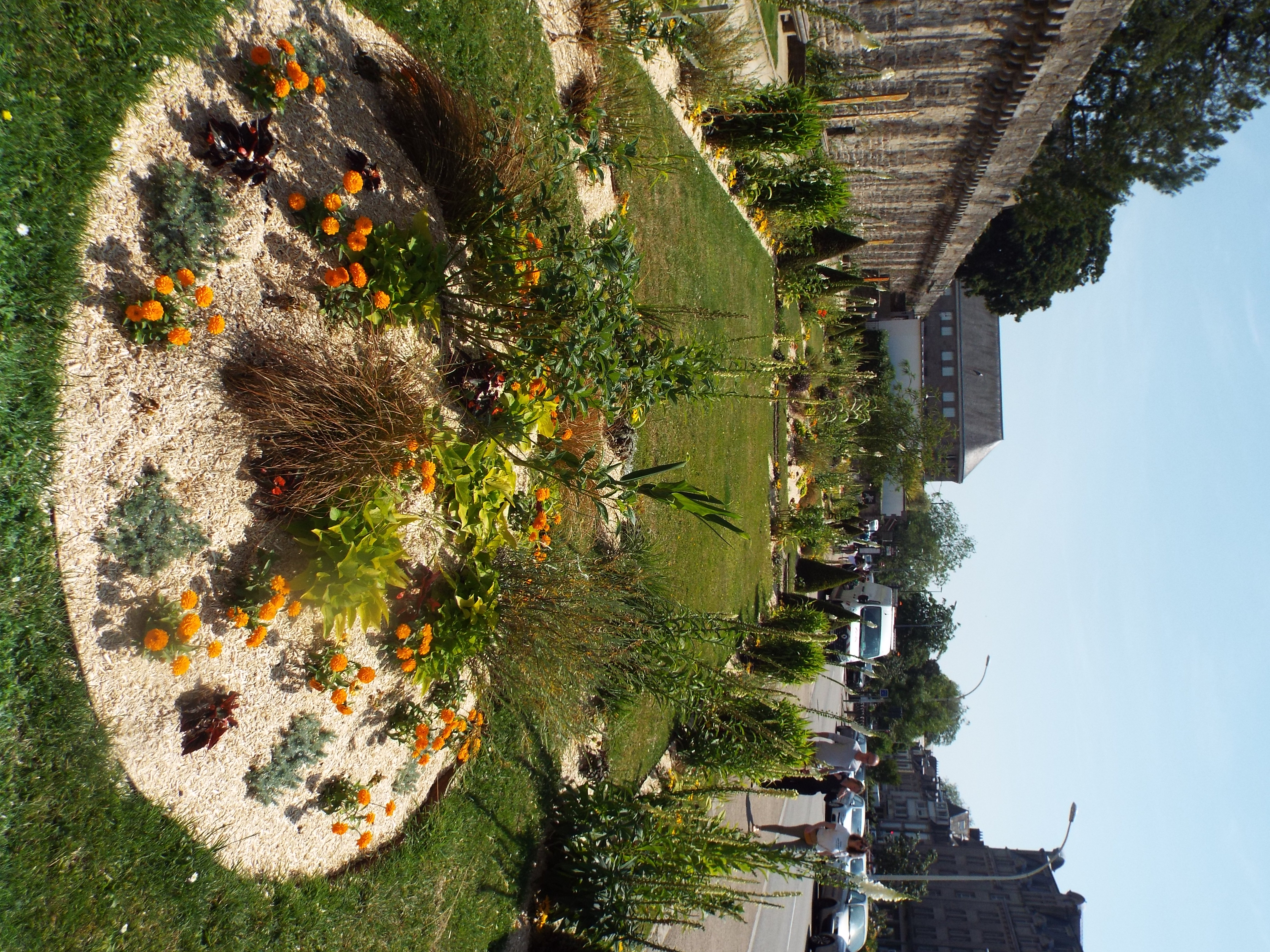
|
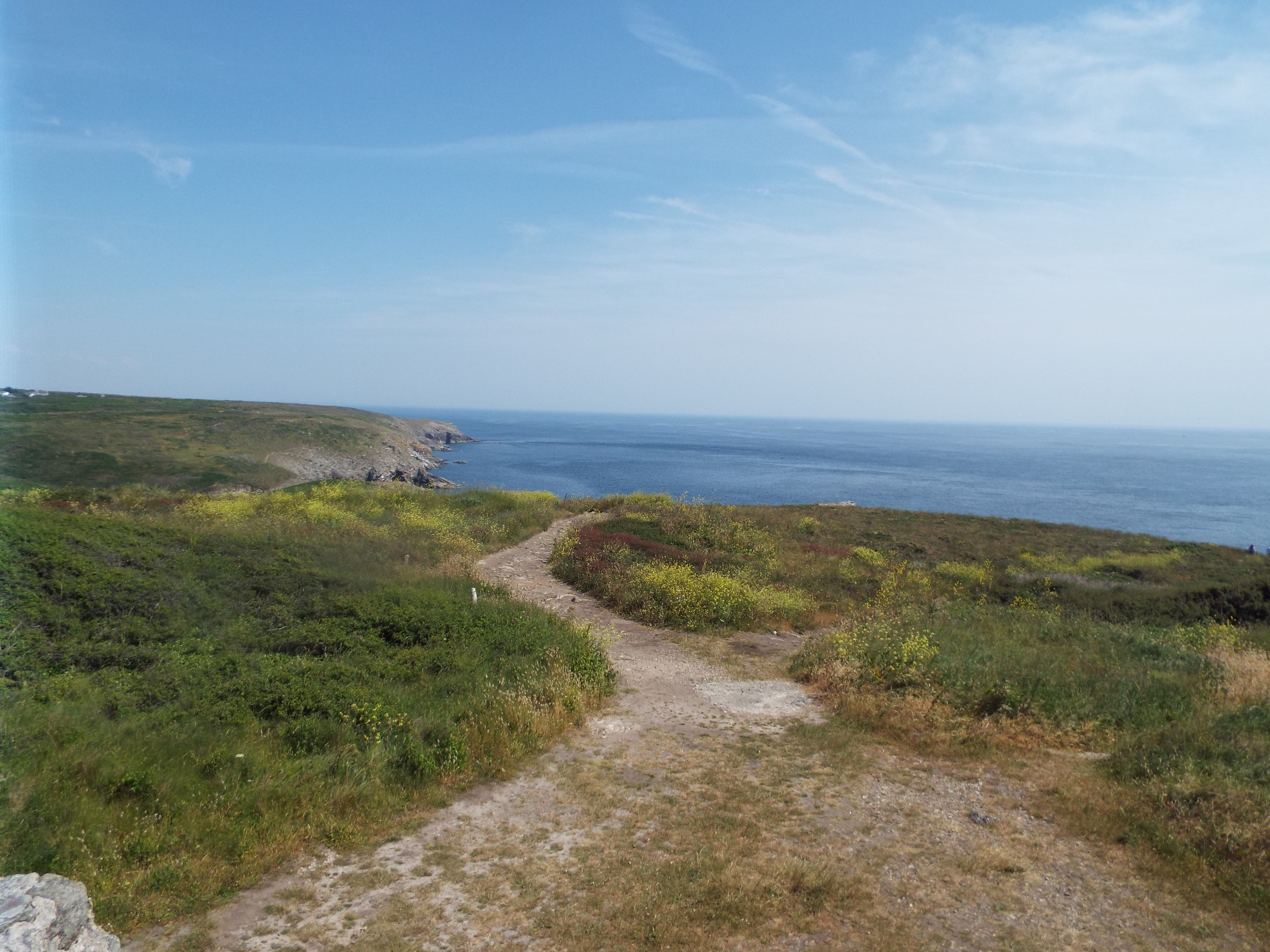
|
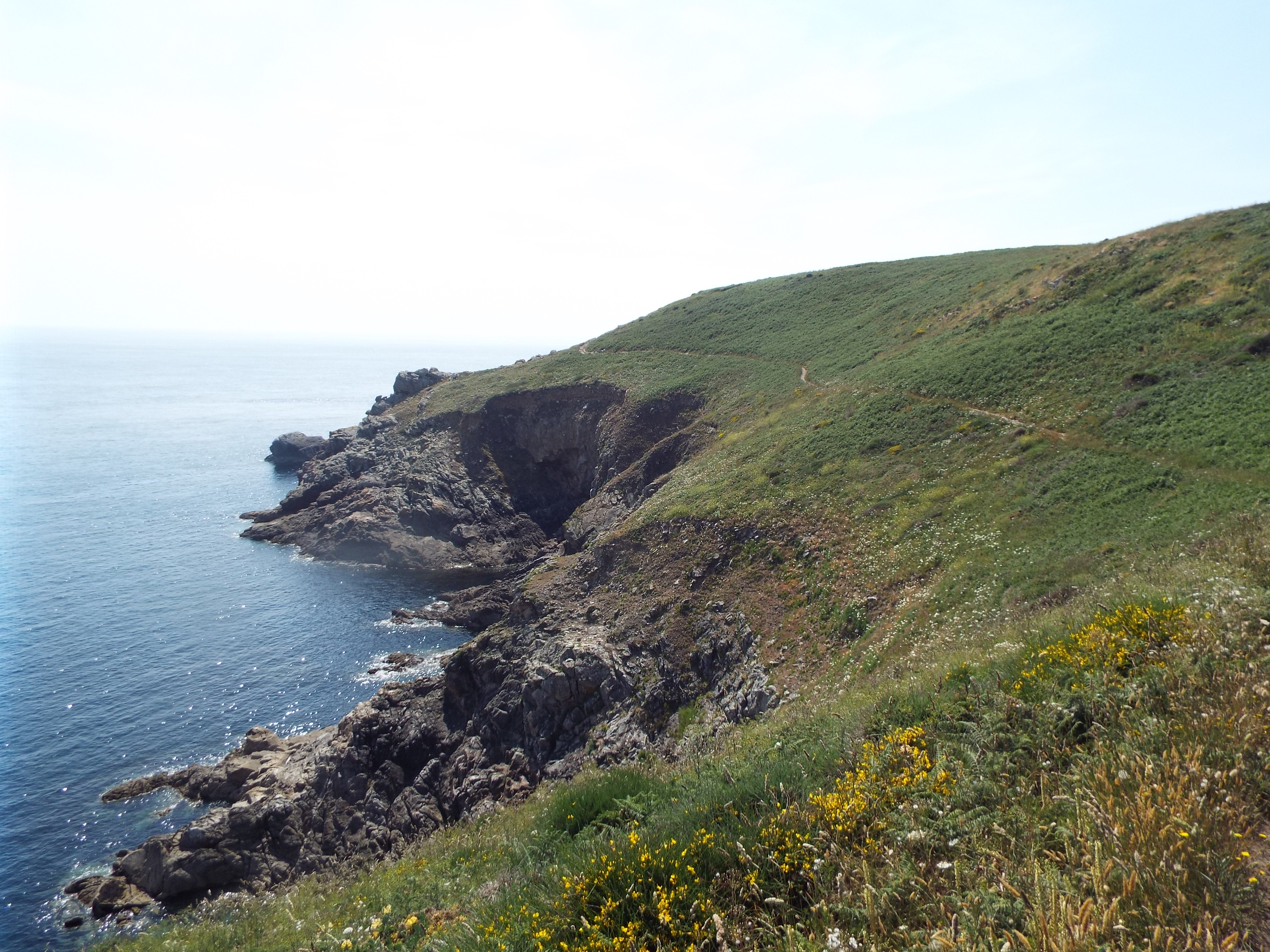
|
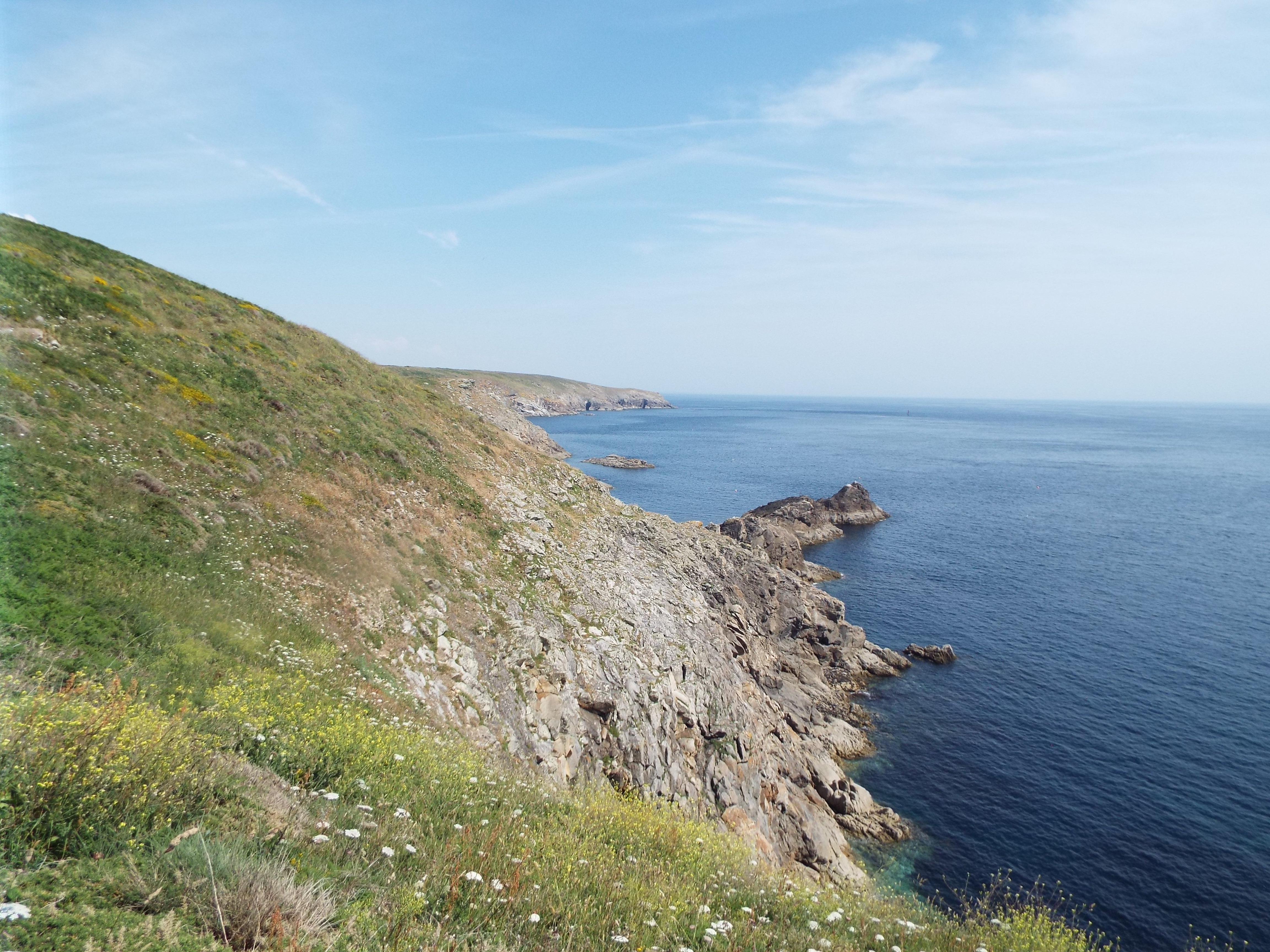
|
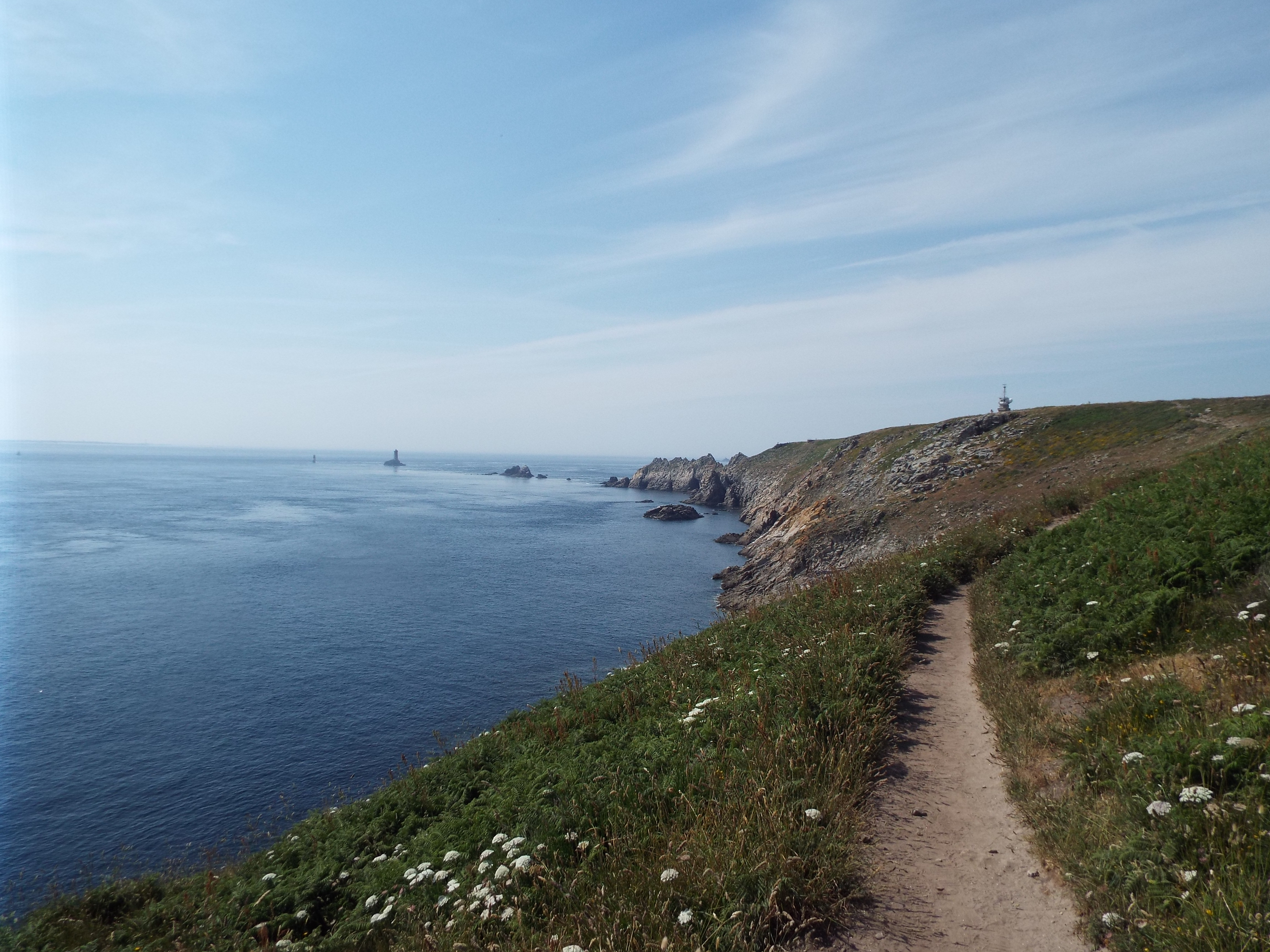
|
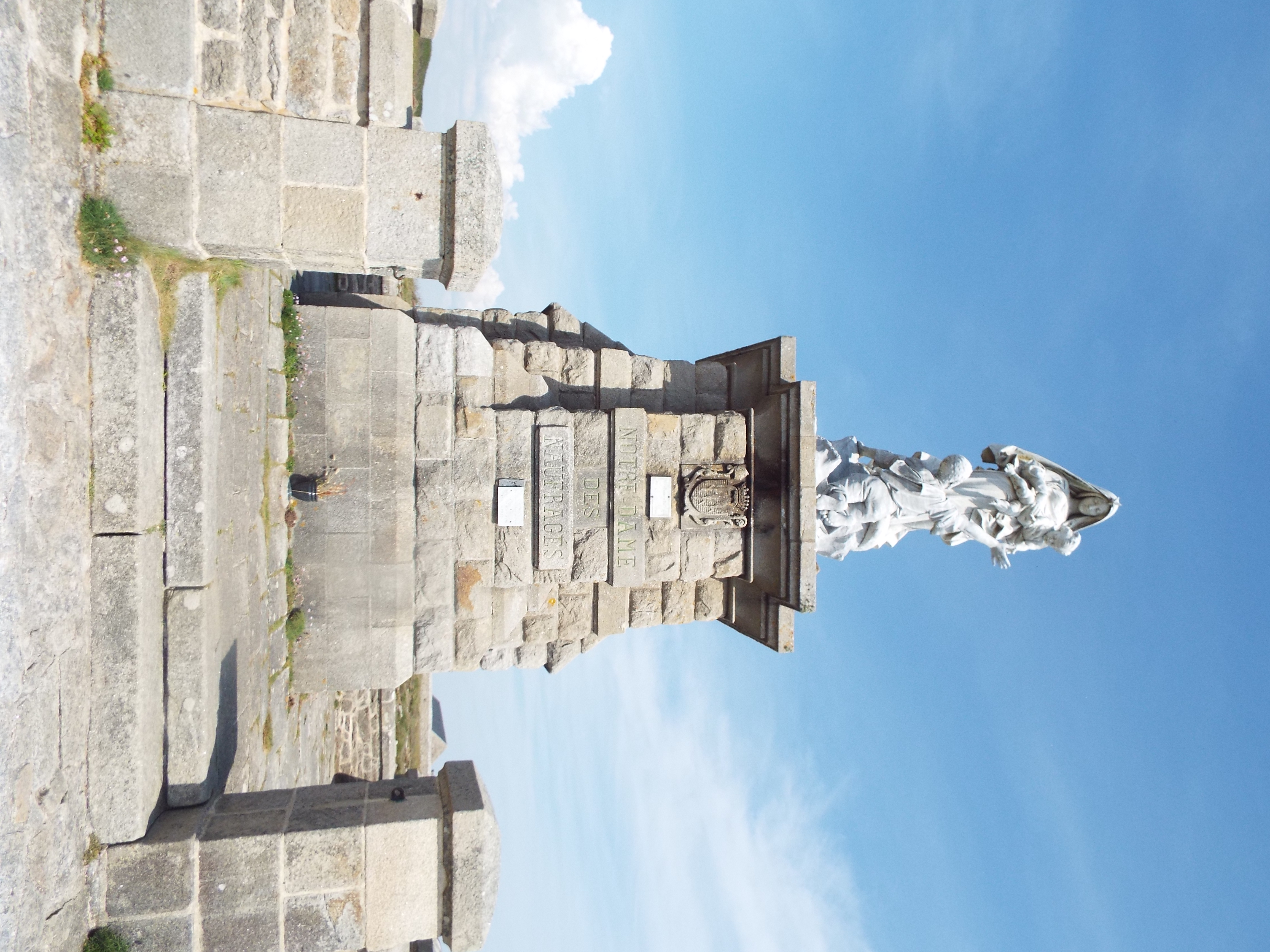
|
After we left Quimper, we visited Pointe du Raz. This is a promontory at the westernmost tip of Brittany. It is a wild area and is styled as one of the "Grand Sites du France", something like a national park in the US. There is a visitor's center and some hiking trails along the coast. Otherwise, it is as nature left it. Nature left it well blessed. It has beatiful vistas everywher and the trail runs by all of them. We made a four mile hike along this trail although we could have gone much further. As I mentioned in an earlier post, there is a trail which goes all around the peninsula, and beyond. I understand it covers the entire Atlantic coast of France. This is a part of that trail. France, like most of Europe, has many hiking trails. GPS: N 48 2.376 W 4 44.207 |
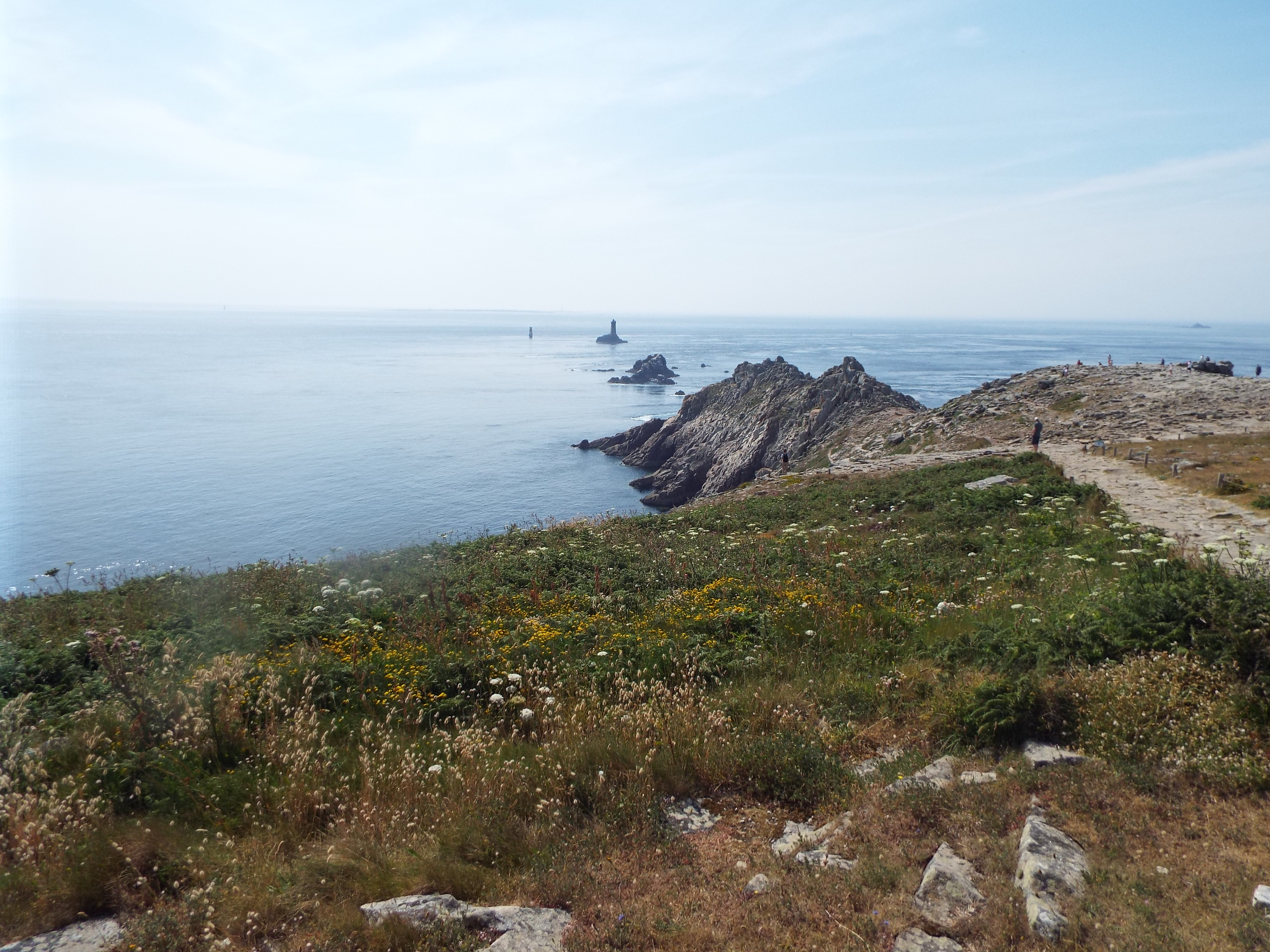
|
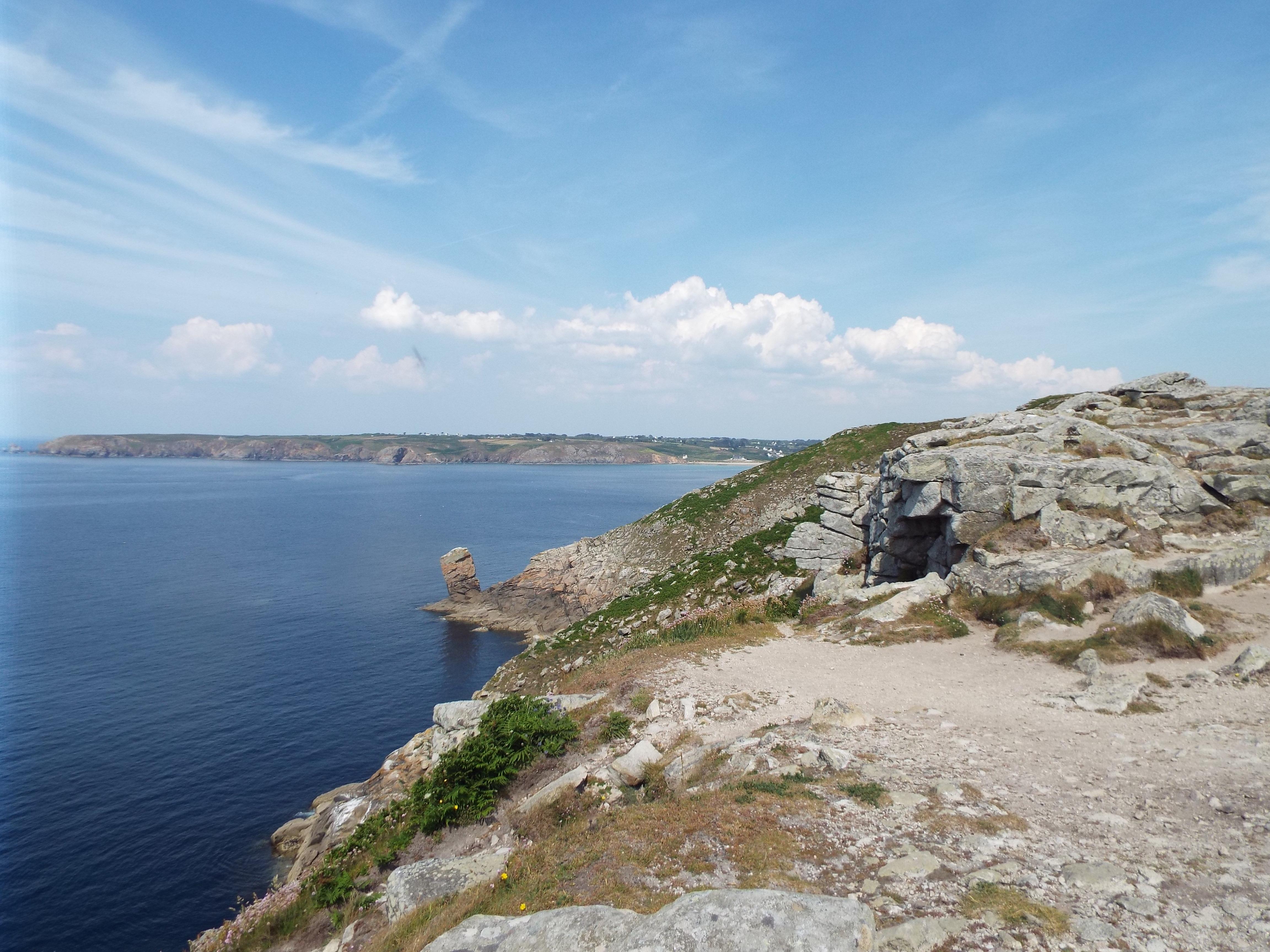
|
| In addition to being a scenic area, it has strategic importance as well, since it juts so far out into the Atlantic ocean and it has high cliffs. During the second world war, Hitler has this area fortified as part of his "Atlantic Wall". Also there were many observation posts from which the Nazis could monitor all naval and commercial maritime traffic going to and from Britain, which they were trying to blockade. |
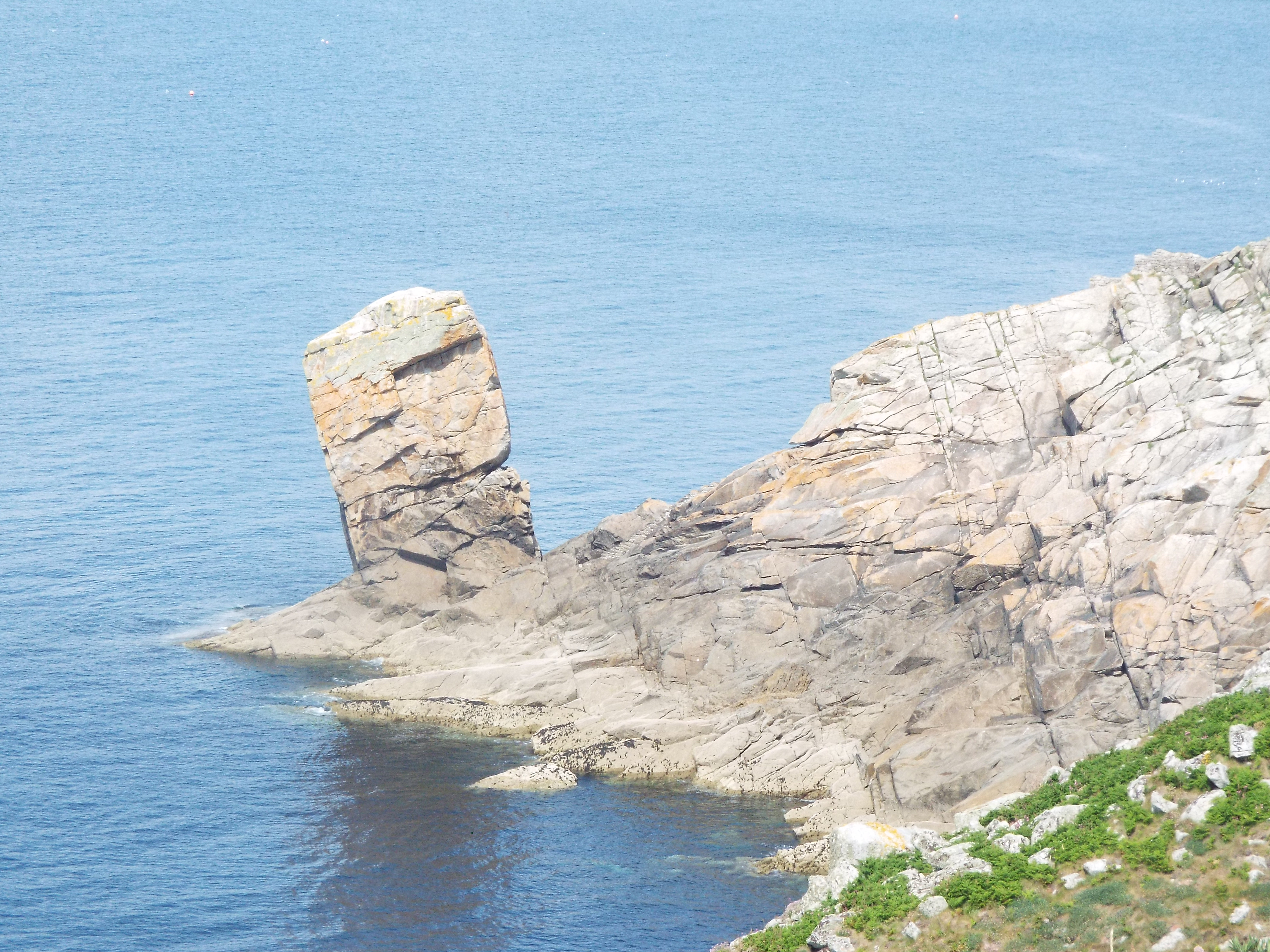
|
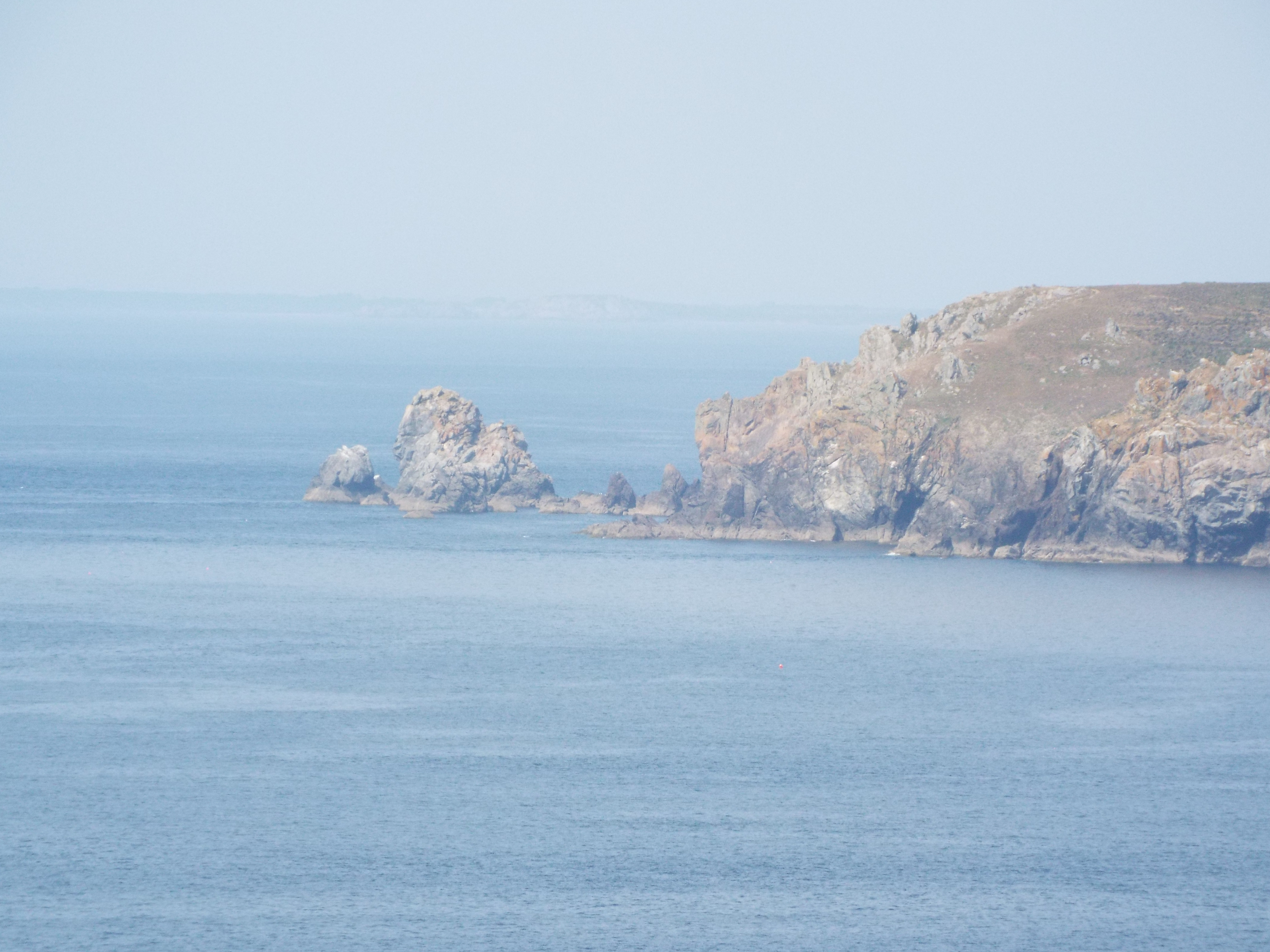
|
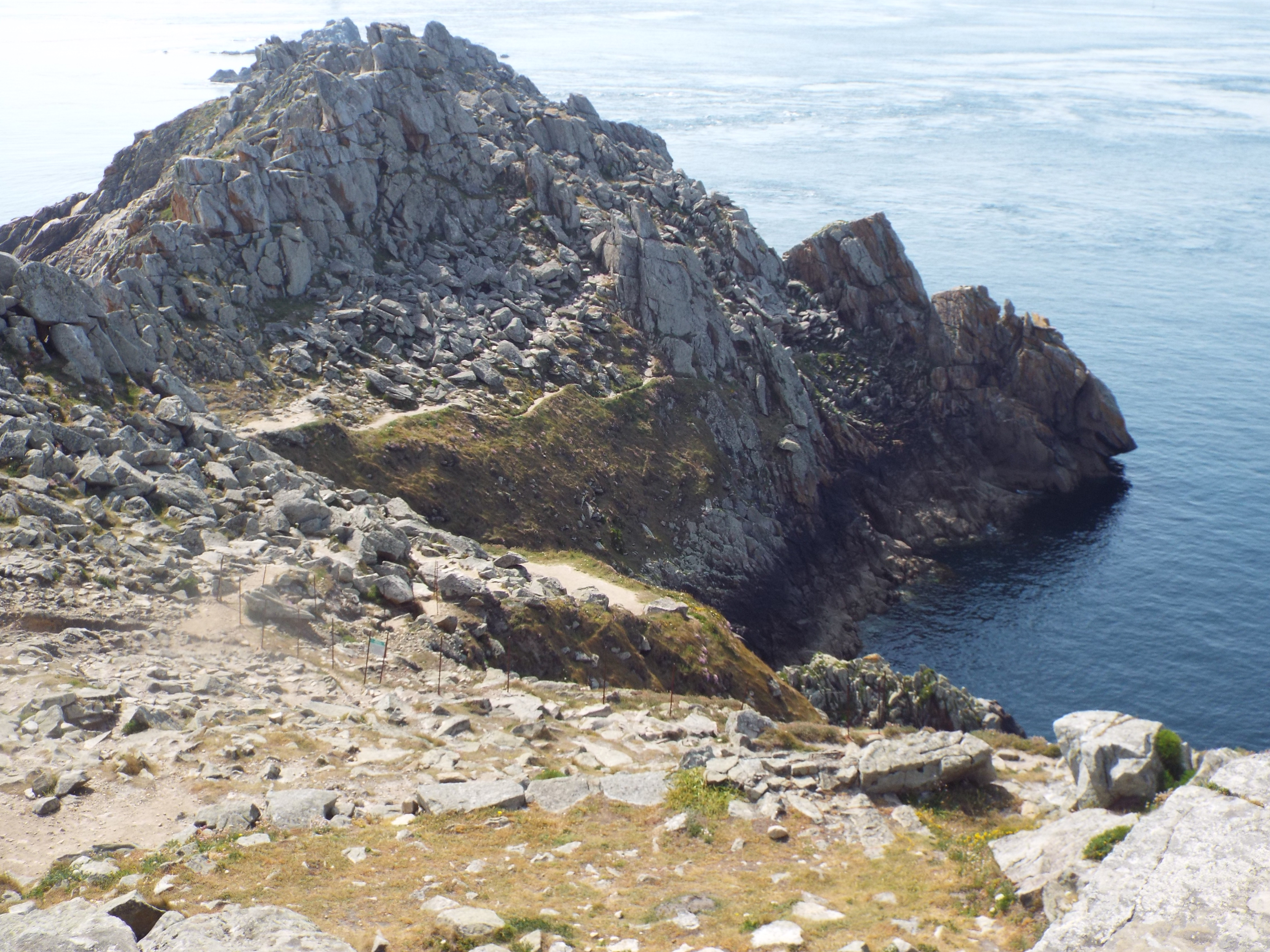
|